I am intrigued by the notion of ‘fictive dreams.’ I dream constantly, remembering in colour, fluid, animated and always cinematographic. My dreams are full of details, tangible stories and fiction. Some of them delivered the script and mood for personal filmic productions. The last decade of my life has been a dream, driven by an inexplicable flow of energies that brought me to places and people, made me discover the world, myself and others. The more I live, the more dreams become reality, and vice versa. Multiple realities intertwine, spaces cross, and time overlaps. Rational systems are questioned, conventions challenged, intuition privileged. So how can a dream not be fictive, is a question I may ask.
Yet I am drawn to this wordplay and its provocative assumption. Its suggestion of multi-layered projections, the doubling of imaginative potentials, the eulogy of hypothetical and creative sensibilities. Three of my fetish authors in recent years come to my mind – Paul Valéry, Maurice Merleau-Ponty and Umberto Eco. Quoting these authors whose intellectual achievements were groundbreaking the 20th century might seem anachronistic for a contribution to Tropical Lab 10* – a project that deals with the very contemporary and that has the purpose of discovering emerging talents of the future. Much has been written on these theories since their publication and the scientific discourse has significantly evolved. However, following the logic of dreams and fiction, these cherished territories of freedom, my thoughts follow a rather intuitive logic of association than the accuracy of a history of thought. It’s my personal experience and interest in the interrelation of sensibility, perception and art’s fragmentary, open character that echoed with the idea of ‘fictive dreams’ and spontaneously brought these references to my mind.
Paul Valéry’s The Outlook for Intelligence, written in 1935, defends the idea that sensibility – which is mistakenly contrasted with intelligence – is an actual vector of knowledge and an essential element in the production of human intelligence. In this short essay, Valéry formulates in an almost visionary manner what has come to pass during the previous century – the modification of modern man’s habits and thinking patterns due to new living conditions in an era of industrial and technological progress. Valéry related this fundamental change to a reduced sensibility of man towards the world, and stressed the therefore inherent risk for a loss of intelligence. If his analysis refers to the Industrial Revolution of the late 19th and early 20th century, we might add that the Internet Revolution at the end of the last century has had an even greater impact. A new space was brought to us, the virtual, which nowadays hosts and conditions a large portion of our actions, including artistic productions. New forms of sensibilities and (artificial) intelligence appeared in this territory in which we navigate almost like in our dreams. We travel from one site to another, encounter fragments of stories and people, unconsciously leaving tracks and personal histories. It is a somehow fictional space that encourages the projection of speculative dreams and horror scenarios, the invention of new personalities and lives. Yet coming back to Valéry’s thoughts, it is his insistence on the importance of the sensible that interests me and that has lost none of its pertinence. Dreams, such as art, offer a space that is subjected to the logic of sensibility, independent from worldly events, yet capable of carrying collective and individual memories and visions that inform us about the state of society.
The particular sensorial experience we retain from dreams makes me think of perception and the unique perspective dreams offer in order to examine ourselves and the world. In this, Maurice Merleau-Ponty’s Phenomenology of Perception (1945) and Eye and Mind (1961) emerge as significant. In these essays, Merleau-Ponty investigated whether consciousness, defined as intentional, is an adequate tool to think of a notion of perception. He suggested, such as Valéry, to widen the spectrum and look into sensible, bodily experiences to understand human’s perceptive nature. According to him, perception can be understood as the self-revelation of the sense of a world in and through a being which is itself a part of the world. Seeing is therefore being drawn into a dimension of Being, a tissue of sensible being to which the perceiving body is not foreign. ‘Fictive dreams,’ I would like to add, is what I see and dream with my body, which actually knows before knowing. The visceral impressions of dreams recall immersive aesthetical sensations I might experience when looking at art.
Umberto Eco’s The Open Work (1962) is the third text that inspires my thoughts and adds to these speculative reflexions on sensibility and perception. It explores the particular role of art in an age of instability and crisis, where senselessness and disorder have become an holistic experience of the contemporary world. Eco’s powerful concept of ‘openness,’ rooted in an artist’s decision to leave arrangements of some constituents of a work to the viewer, reminds me of the fragmentary and ambiguous character of dreams in which the allusive narrative is constantly disrupted. A desire of awareness, involvement and active change awakens.
Dreams and fiction are indeed a favourable terrain for peaceful yet powerful resistances through artistic imagination and sensible approaches. If they are not directly subordinated to social, political and economical realities, they have the capacity to unveil drawbacks of current events in personal and collective contexts. The fictive dreams I am interested in do not escape from reality but rather interact with it, and initiate, just like particular forms of art, a call to action. They function as mirrors unveiling blindspots, or spotlights that shed light on hidden aspects of human nature. Dreams are often sparked by unfulfilled desires, imperfections and urgencies of change. They are the spaces where our subconsciousness become visible and tangible, where reality and our own position in the world is critically reframed. This shift of perspective may be uncomfortable and uncanny, or may even be a beautiful prevision of a state yet to come.
The ambiguous, plural and undetermined character of things has now been an accepted category of knowledge for a long time, and is particularly perceptible in current contemporary art trends. Artists’ convocation of surreal, unconscious forces, the imagination of sci-fi scenarios, hyperreal worlds and immersive experiences offer undoubtedly unlimited possibilities for these dreamlike fictions. In celebration of the 10th anniversary of Tropical Lab 10, the following selection of images introduce artworks by 10 international artists with whom I have been working with for many years. My choice is motivated by their capacity to develop speculative strategies, change conventional perspectives, and transgress codes of representation and media. I have witnessed outstanding manifestations of intelligence rooted in the sensible and personal works of these artists who articulate precisely this passage from reality to fiction, and explore fragile cultural, social and political interstices.
Yoko Fukushima
Born in Gumma, Japan. Lives and works in Paris, France.
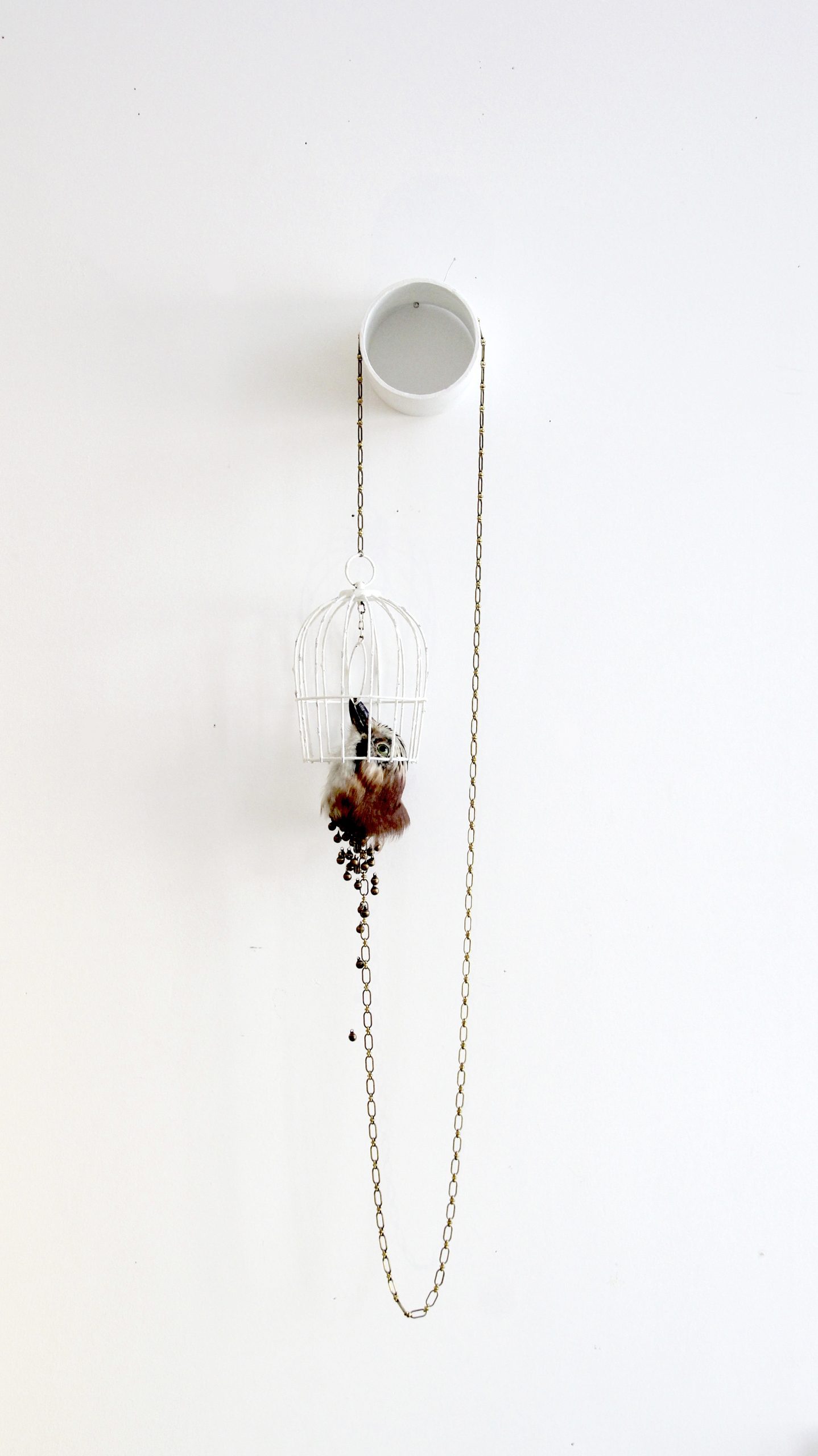
Swinging Humming, 2016
synthetic hair, synthetic flowers, wood, nylon thread
200 x 60 x 10 cm (overall)
Courtesy of the artist

Freedom no Freedom, 2016
stuffed bird (Eurasian jay), nylon thread, bells, chain, painted cage
85 x 20 x 10 cm (overall)
Courtesy of the artist
Barbara Hlali
Born in Dortmund. Lives and works in Dortmund, Germany.
Media reports show the wall around the Shiite district in Baghdad being painted with beautiful landscapes: aesthetic designs are used to cover military measures and the effects of war. In this film, Barbara Hlali applies a similar technique with regard to the overall situation by painting over this TV footage with a layer of gouache. The act of painting unmasks the painted-over situation, demonstrating how the war constantly comes to the fore below the surface of sugar-coating.
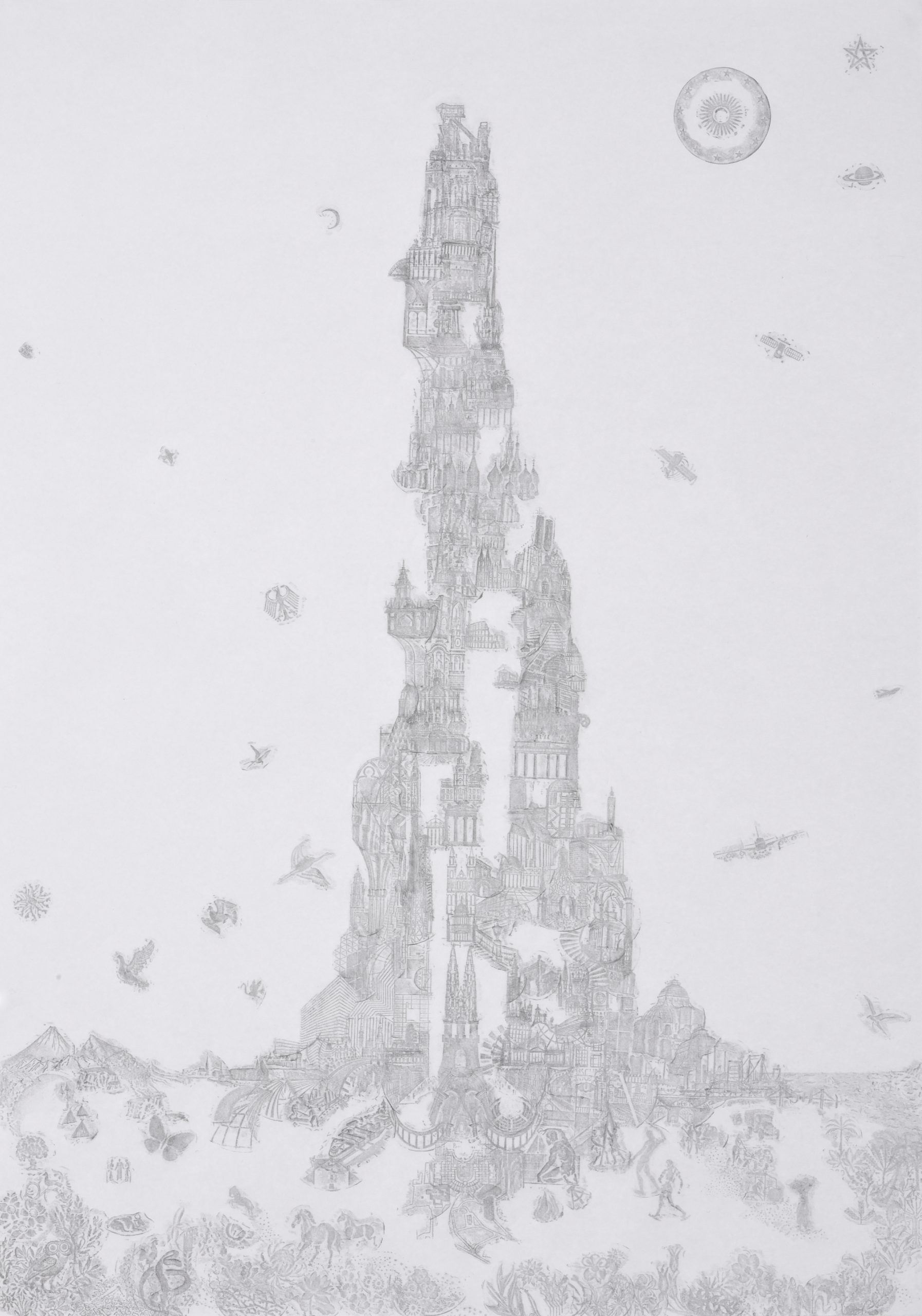
Tower of Babel, Coin Frottage no. 49, 2015
pencil on paper
42 x 29.7 cm
Courtesy of the artist
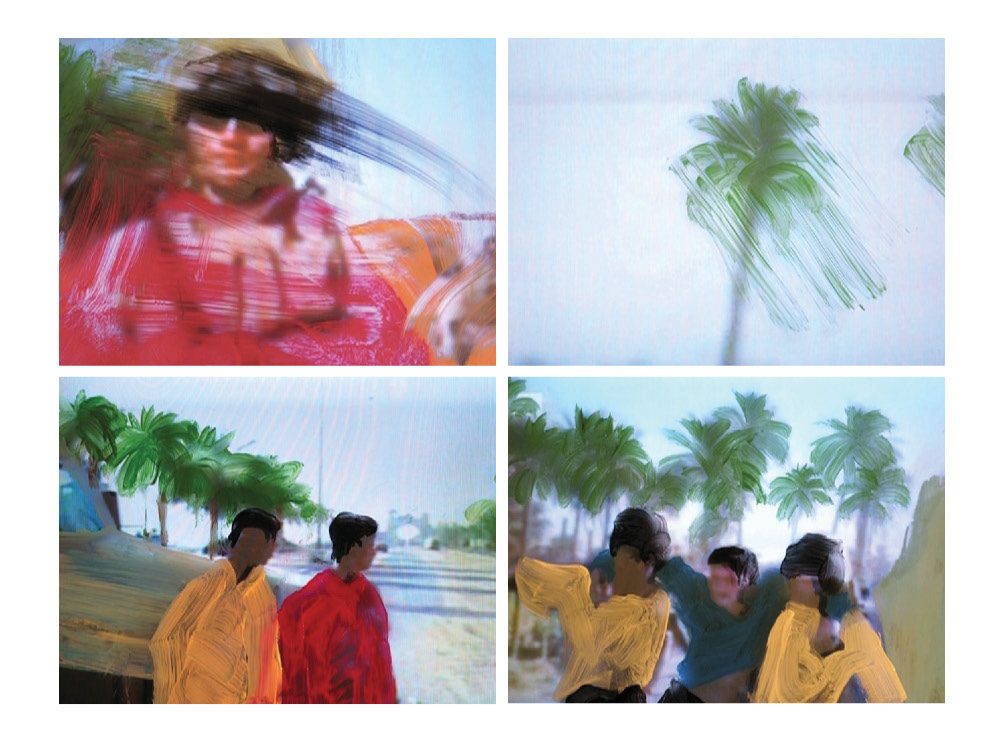
Painting Paradise, 2008
gouache on TV screen, digital video
5:30 min
Courtesy of the artist
Sarnath Banerjee
Born in Calcutta, India. Lives and works in Berlin, Germany.

Temporary Autonomous Zones, 2012
ink and brush on paper
16.5 x 28 cm each
Courtesy of Project 88 and the artist
Taysir Batniji
Born in Gaza, Palestine. Lives and works in Paris, France.
By naming his series of images Interface, Taysir Batniji plays on the meaning of a word commonly used in the disciplines of geography and computing. Interface is also a reference to the place itself, Bahrain, that translates literally to ’two seas.’ Thus, the photo series appears as a documentation of shapes that are often the contact of two distinct spaces within the landscape.
For Batniji, sand and water are recurring elements that become common vectors throughout his images for Interface. Together, land and sea symbolise the shore, the border and the threshold. The sand is a metaphor for the continuous state of metamorphosis that the landscape of Bahrain is experiencing. The artist perceives the country to be in a state of perpetual transformation, reclaiming land from the sea to expand its borders, where sand connotes a work-in-progress. Interface produces, as its computing meaning suggests, a system of illusions – nearly virtual – of these model-like architectures, of their volumes, in a country that vacillates between reality and fiction while it metamorphoses. (Alexandre Castant)

Interface, 2014
inkjet on paper
80 x 50 cm
Courtesy of the artist
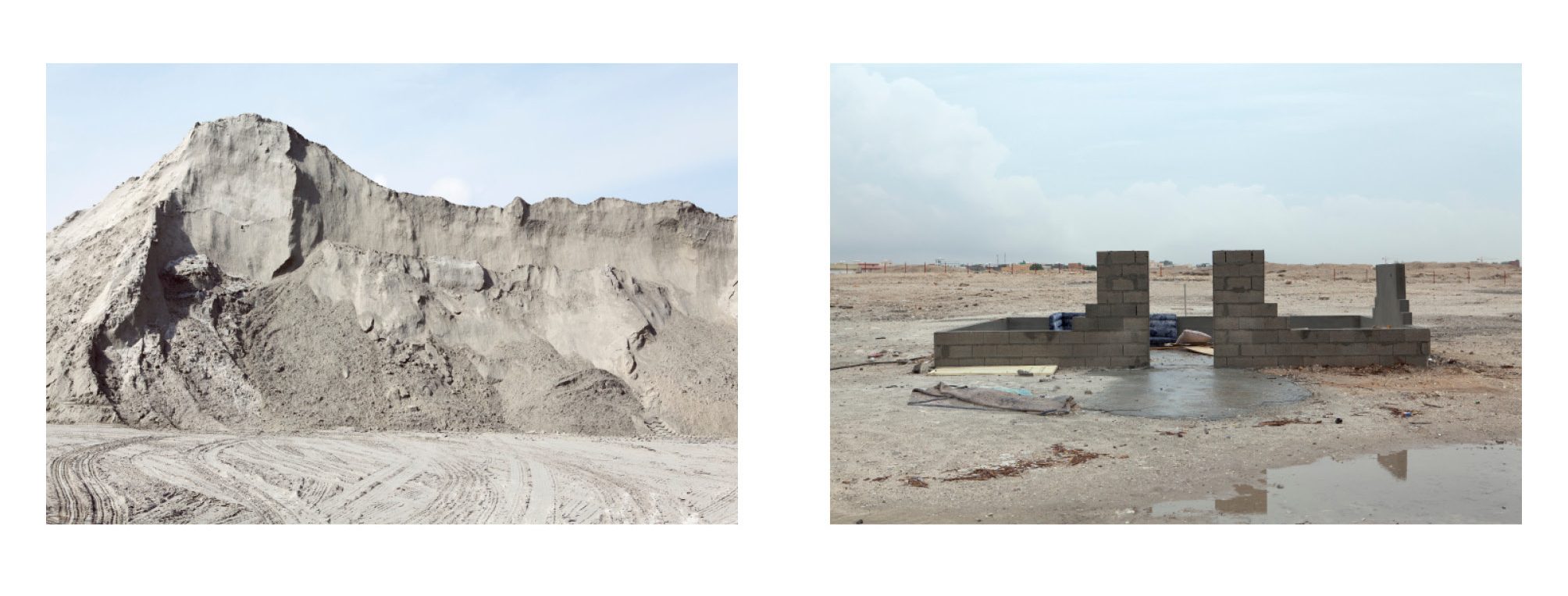
Interface, 2014
inkjet on paper
80 x 50 cm
Courtesy of the artist
Alexander Schellow
Born in Berlin, Germany. Lives and works in Cologne, Germany.
The construction of the Kifisias freeway begun in the 1970s and was finally completed for the Athens Olympics in 2004. The Kifissos river, which has historically served as the formative axis of the cities development, has since been nearly entirely covered over within the city perimeter. In a series of drawings and animations, NERO reconstructs the flow of the river through the perceptions and practices that preserve it as an urban reality and unpacks the river’s material and imaginary ‘presence’ in daily life along with related strategies of remembering, forgetting and actualising. The research along the Kifissos and in conversations with residents, city planners, politicians, ecologists and archaeologists intends to reveal the concrete effects had on the way people in Athens orient and position themselves, as well as the polemics, projections and social realities ignited by the ‘Kifissos issue.’
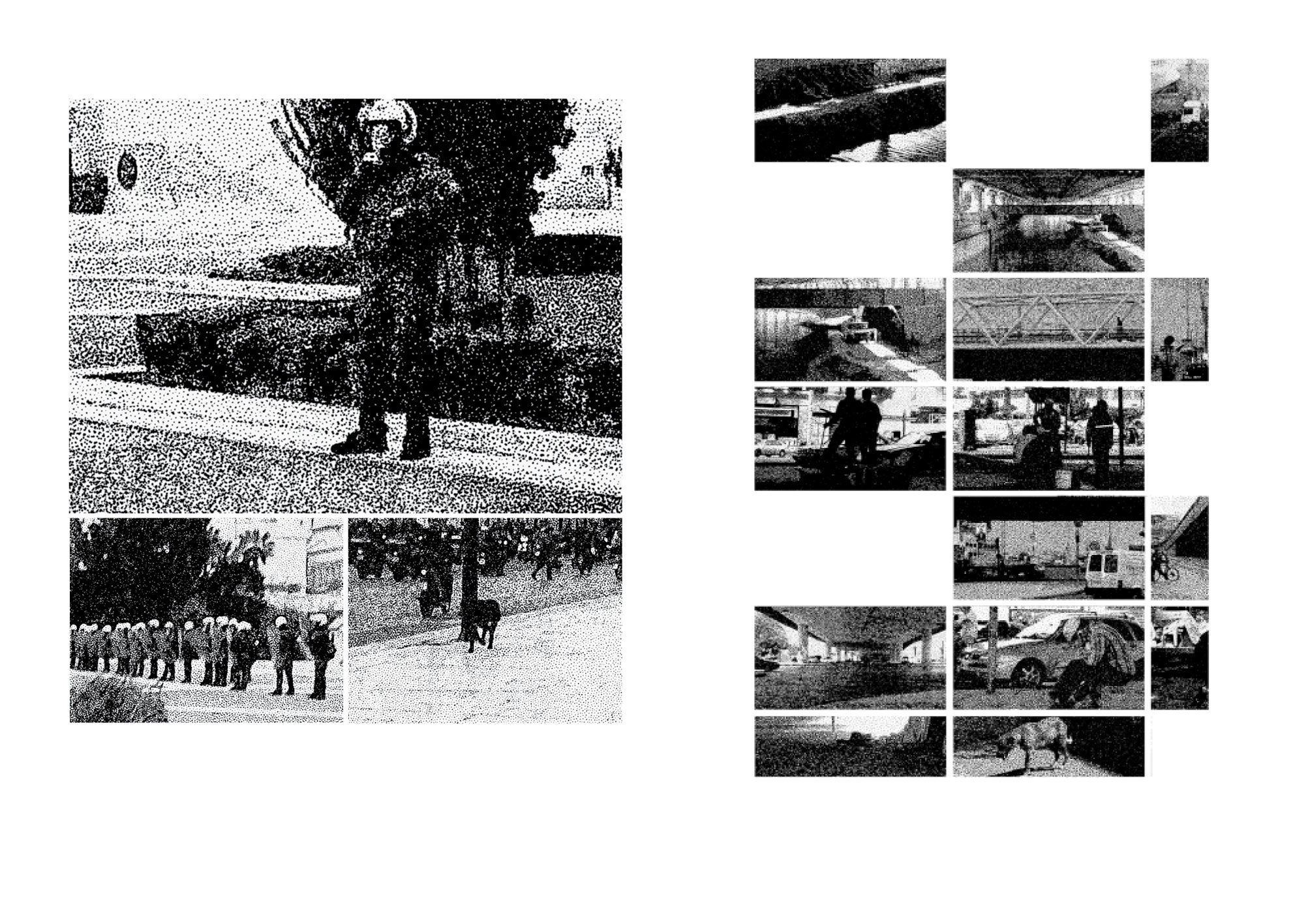
NERO, 2012-2016 (ongoing)
approximately 2000 drawings, partial reprints in books and animation loops, and ink on tracing paper
37 x 28 cm
Courtesy of the artist and MELD (Paris/Athens)
Debbie Ding
Born in Singapore. Lives and works in London, UK.
Rules for the Expression of Architectural Desires by Debbie Ding presents a selection of speculative rules, schemes, devices and instruments for the urban and social design of a city.
The time is neither future nor past. The place is neither East nor West. The design of our built environments begin with ideas, and these ideas are articulated in ways which may be conceptual, fuzzy, or imprecise. What we find is that the material of a city is immaterial at its very core. Our attempts to define rules for society precede every action, motion or change in our urban environment, and our urban experiences can be altered when we change the manner in which we define a city.
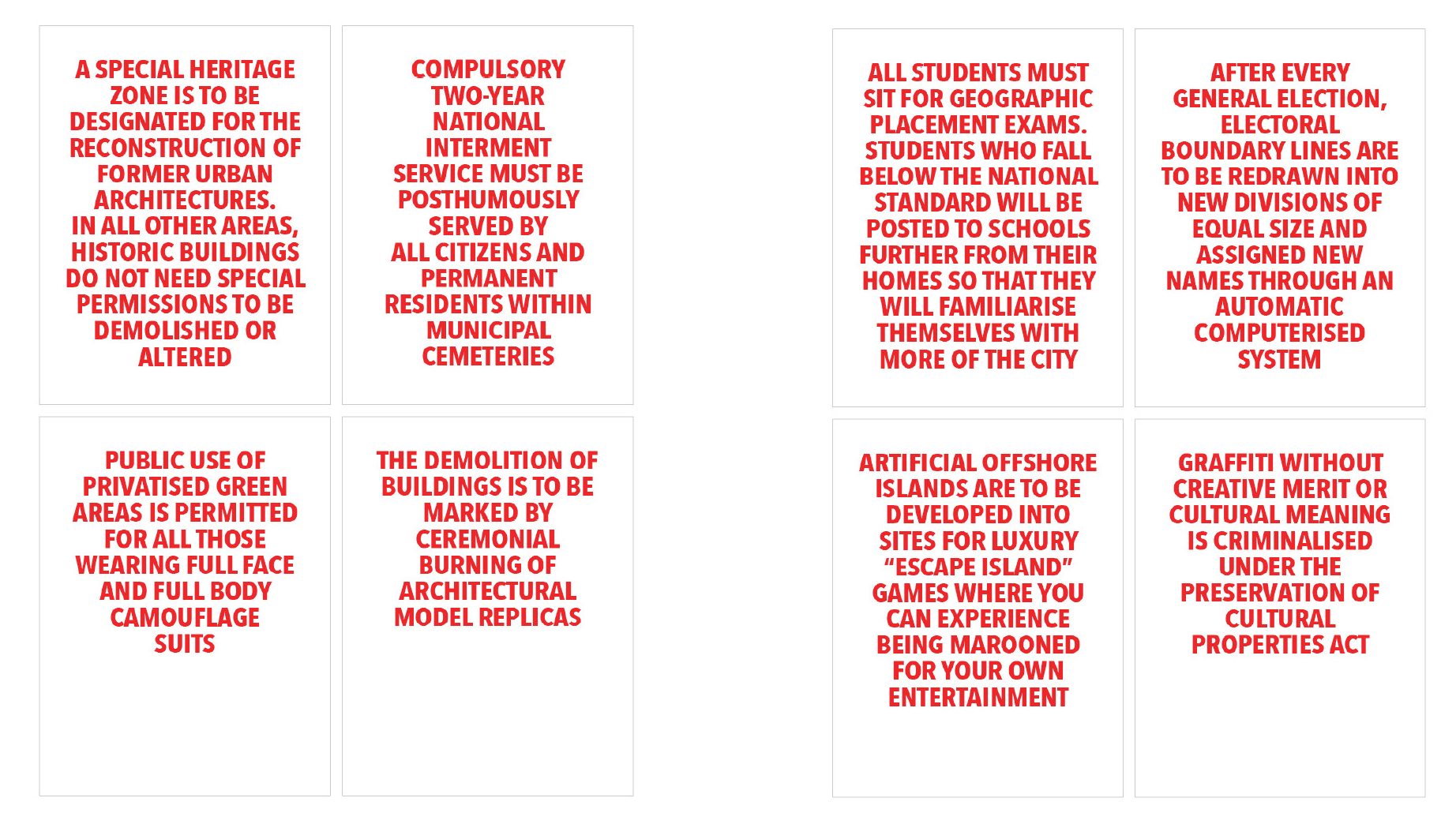
Rules for the Expression of Architectural Desires (excerpts), 2015
digital print on paper
42 x 29.7 cm
Courtesy of the artist
Godwin Koay
Born in Singapore. Lives and works in Singapore.
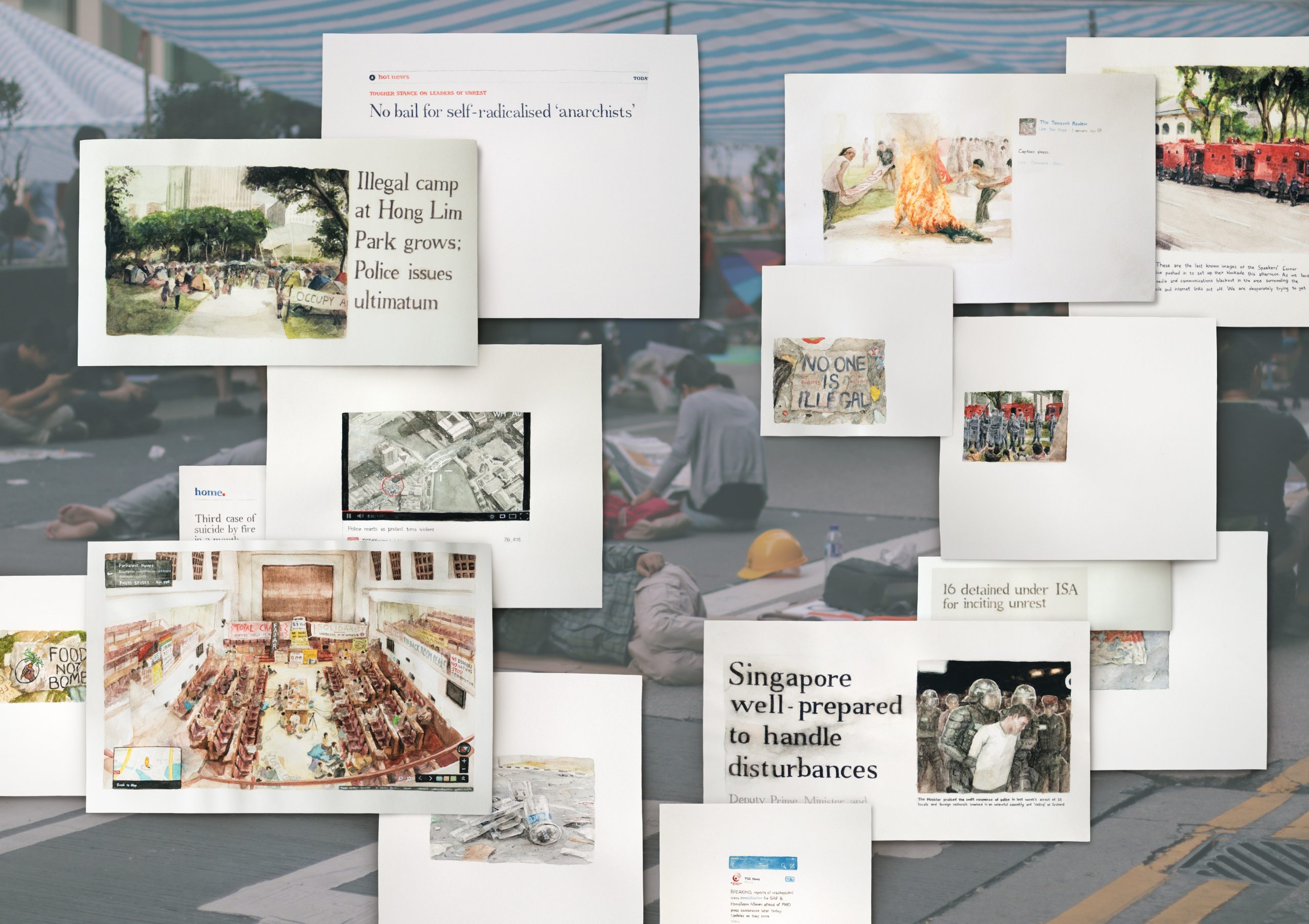
Excerpts from Notes from a Revolution, 2012–2016 (ongoing), in a digitised arrangement
watercolour and inkjet print on paper with photography
dimensions variable
Courtesy of the artist
Larissa Sansour
Born in Jerusalem, Israel. Lives and works in London, UK.
The Nation Estate project consists of a nine-minute sci-fi short film and a photo series offering a clinically dystopian, yet humorous approach to the deadlock in the Middle East.
With its glossy mixture of computer-generated imagery, live actors and an Arabesque electronica soundtrack, the Nation Estate film explores a vertical solution to Palestinian statehood. The Palestinian State comes in the form of a single skyscraper: the Nation Estate. This one colossal high-rise houses the entire Palestinian population – now finally living the high life.
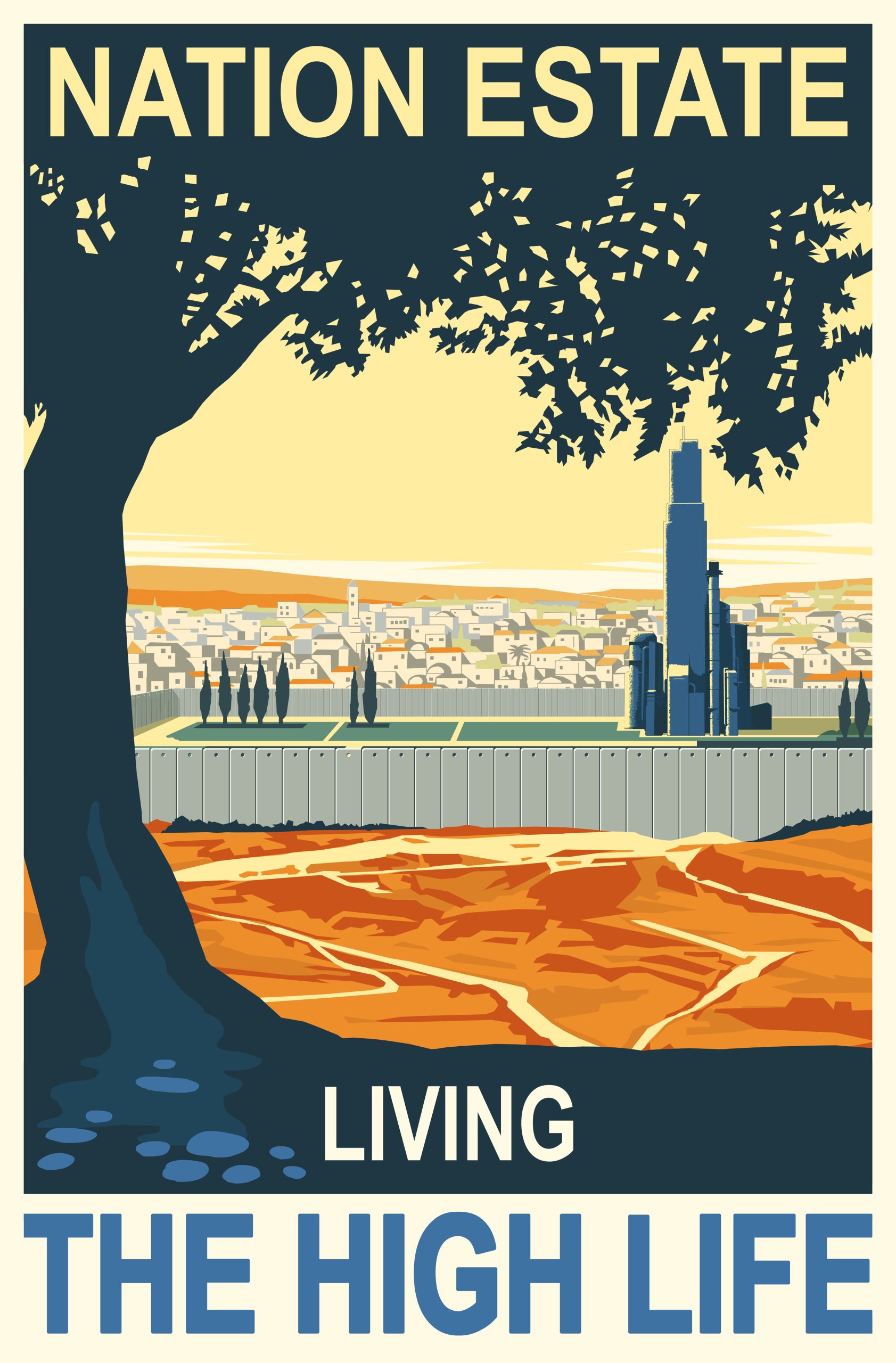
Nation Estate Poster, 2012
paper print
100 x 150 cm
Courtesy of Lawrie Shabibi Gallery/Sabrina Amrani Gallery and the artist

Nation Estate, 2012
high-definition digital video, cinemascope (1:2.35) , colour, sound
9:02 min
Courtesy of Lawrie Shabibi Gallery/Sabrina Amrani Gallery and the artist
Patricia Reinhart
Born in Vienna, Austria. Lives and works in Paris, France.
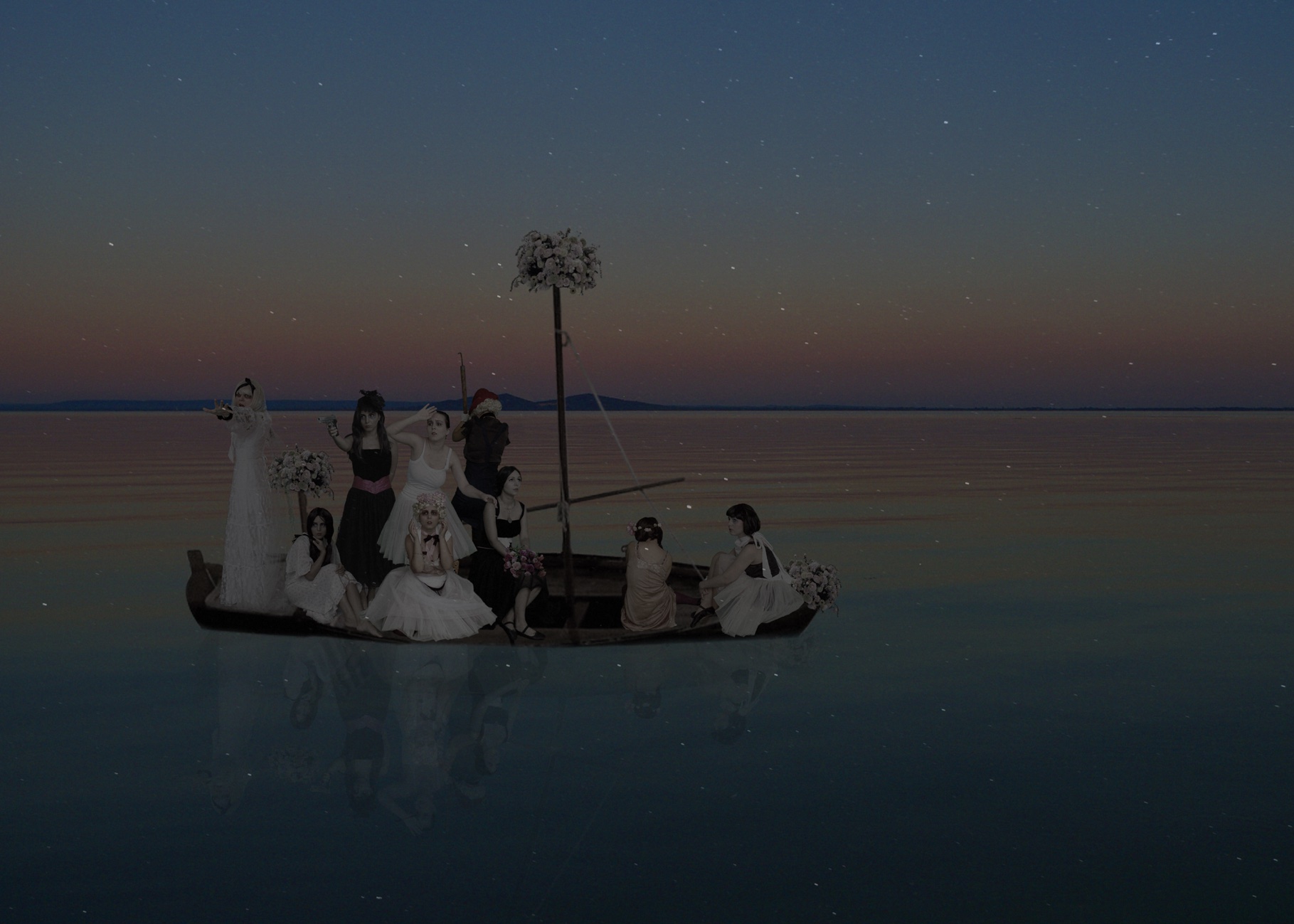
Die Hochzeitsgesellschaft, 2011
C-print
50 x 70 cm
Courtesy of the artist
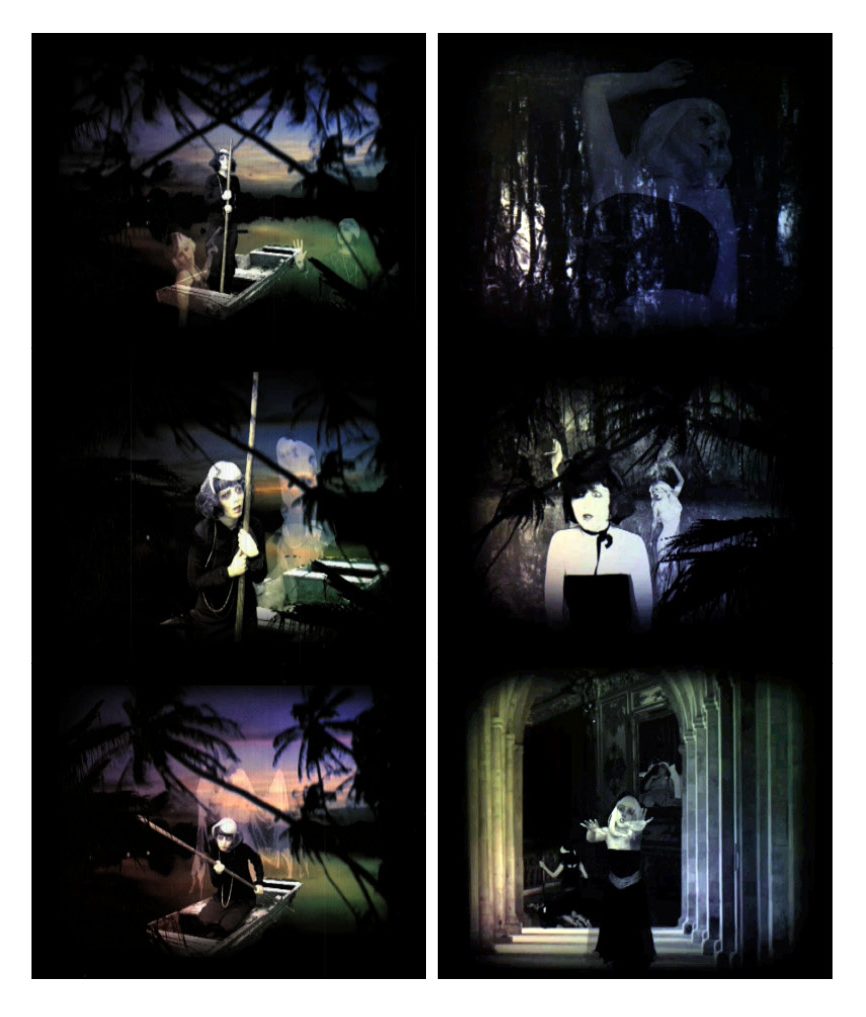
Kirkirerland, 2008
ciné collage, colour
1:05 min
Courtesy of the artist
Nocturne in Schwarz, 2008
ciné collage, colour, sound
3:22 min
Courtesy of the artist
Sookoon Ang
Born in Singapore. Lives and works in Paris, France and Singapore.
Exorcize Me is a photography, videography and live performance project addressing coming-of-age anxiety, teenage alienation and the confusing phase between childhood and adulthood. The title, Exorcize Me, speaks about the unease within one’s own skin and the yearning to get rid of new-fangled fears and unfamiliar emotions. The goth makeup, baby language, school setting and uniforms are juxtapositions of reality and fiction, interior world brought out to the exterior.
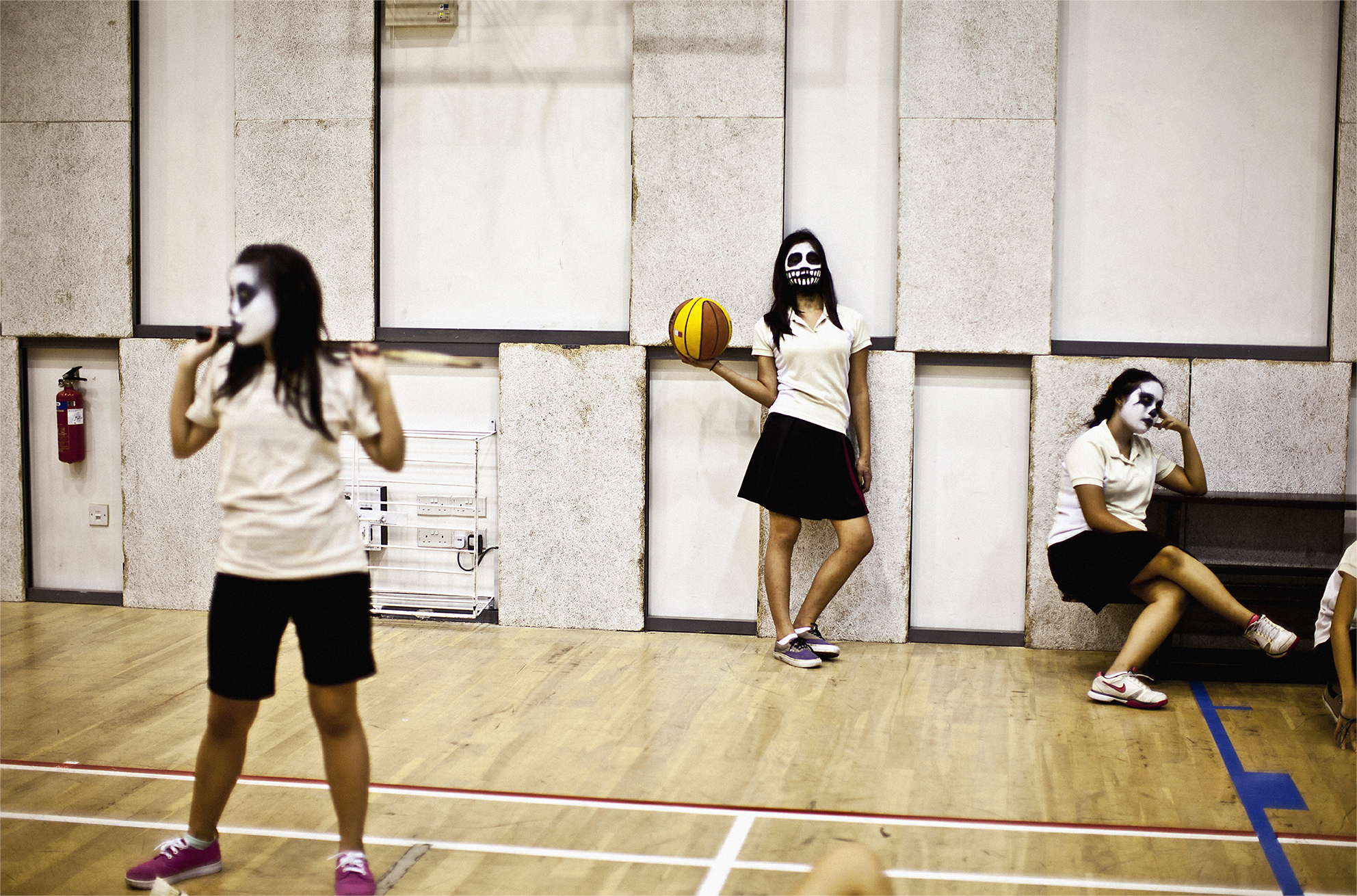
Exorcize Me III, 2013
ultra chrome ink on archival paper
120 x 80 cm
Courtesy of the artist
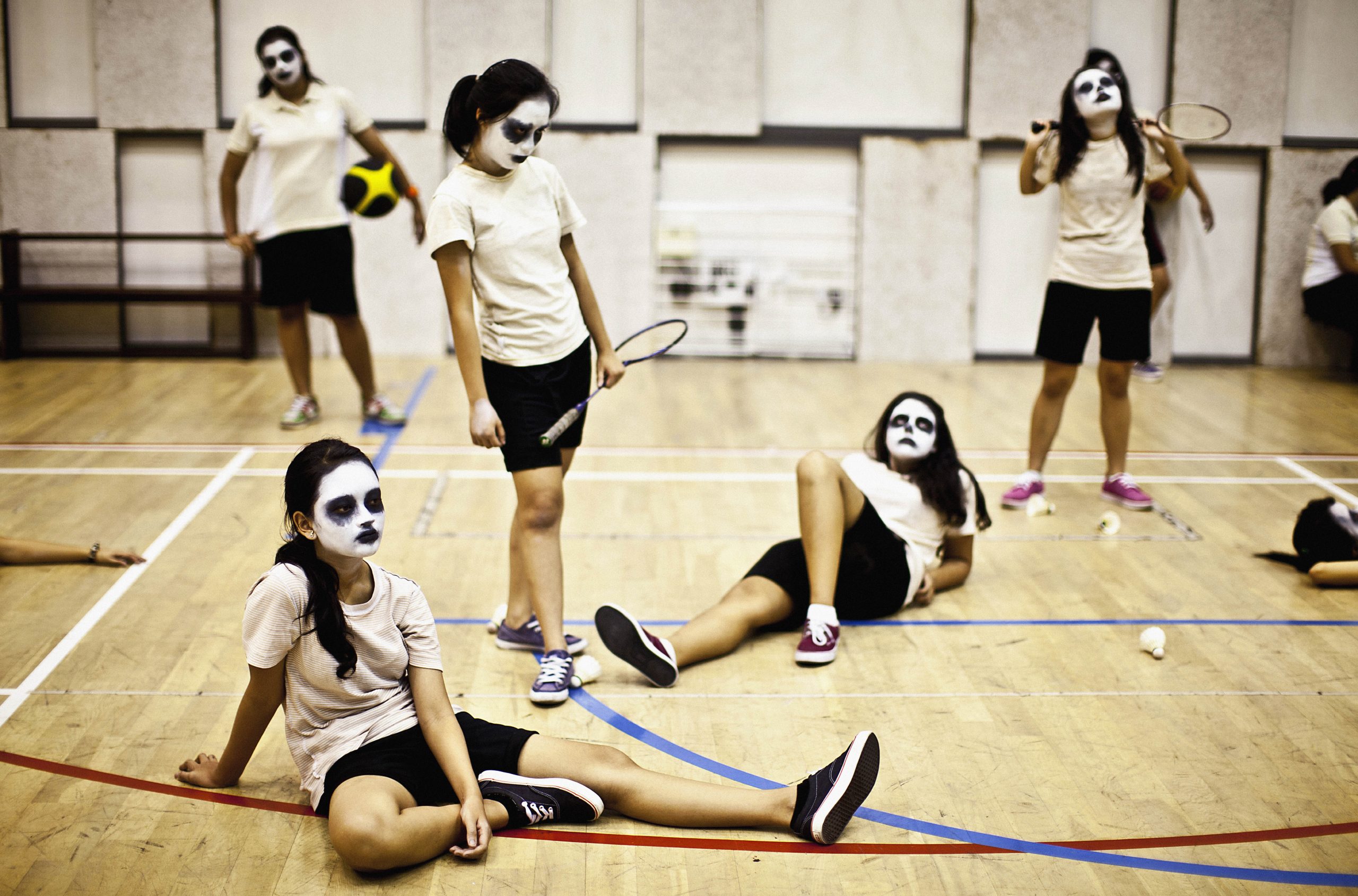
Exorcize Me IV, 2013
ultra chrome ink on archival paper
120 x 80 cm
Courtesy of the artist

Exorcize Me V, 2013
ultra chrome ink on archival paper
120 x 80 cm
Courtesy of the artist
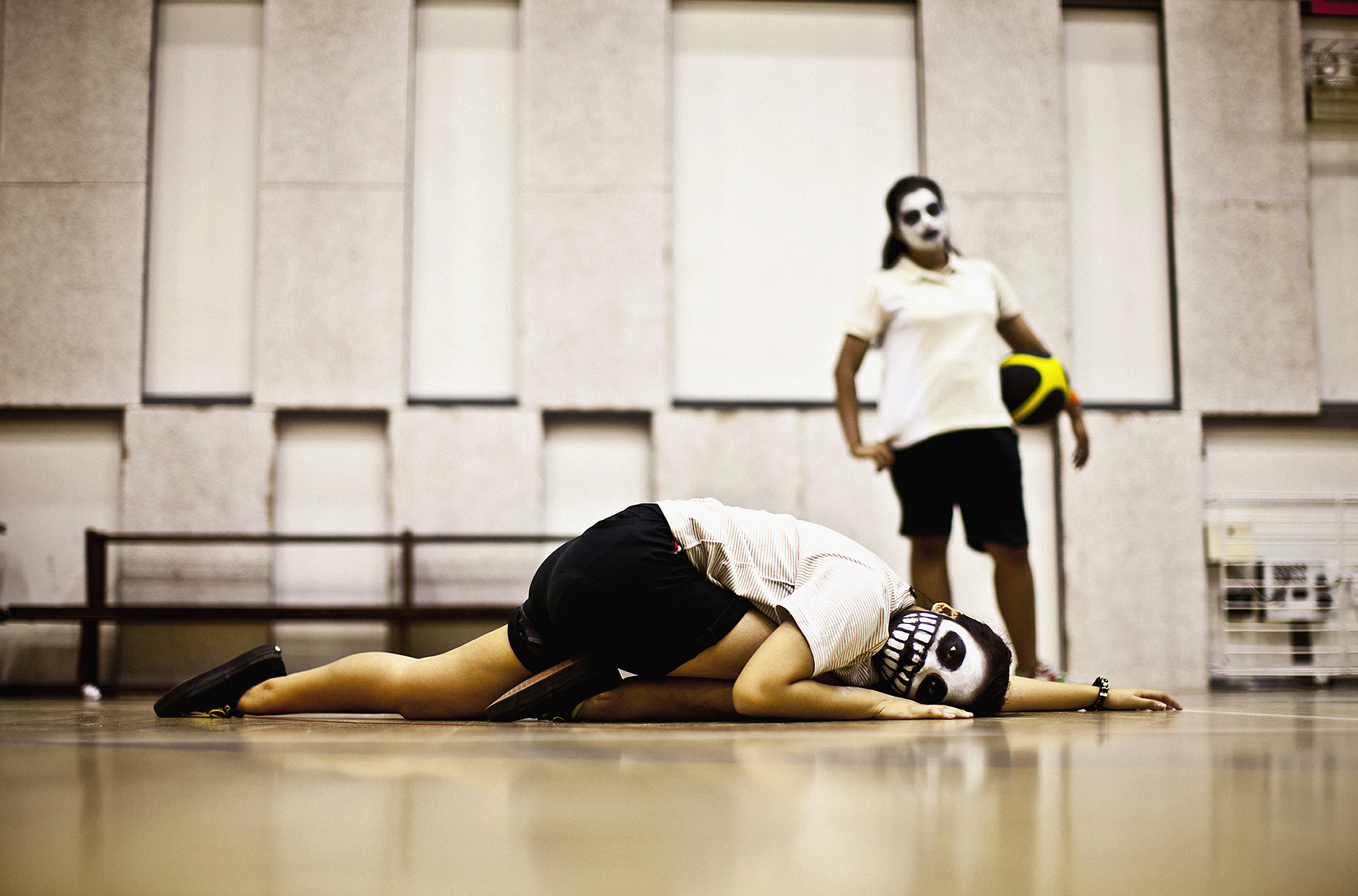
Exorcize Me VI, 2013
ultra chrome ink on archival paper
120 x 80 cm
Courtesy of the artist

